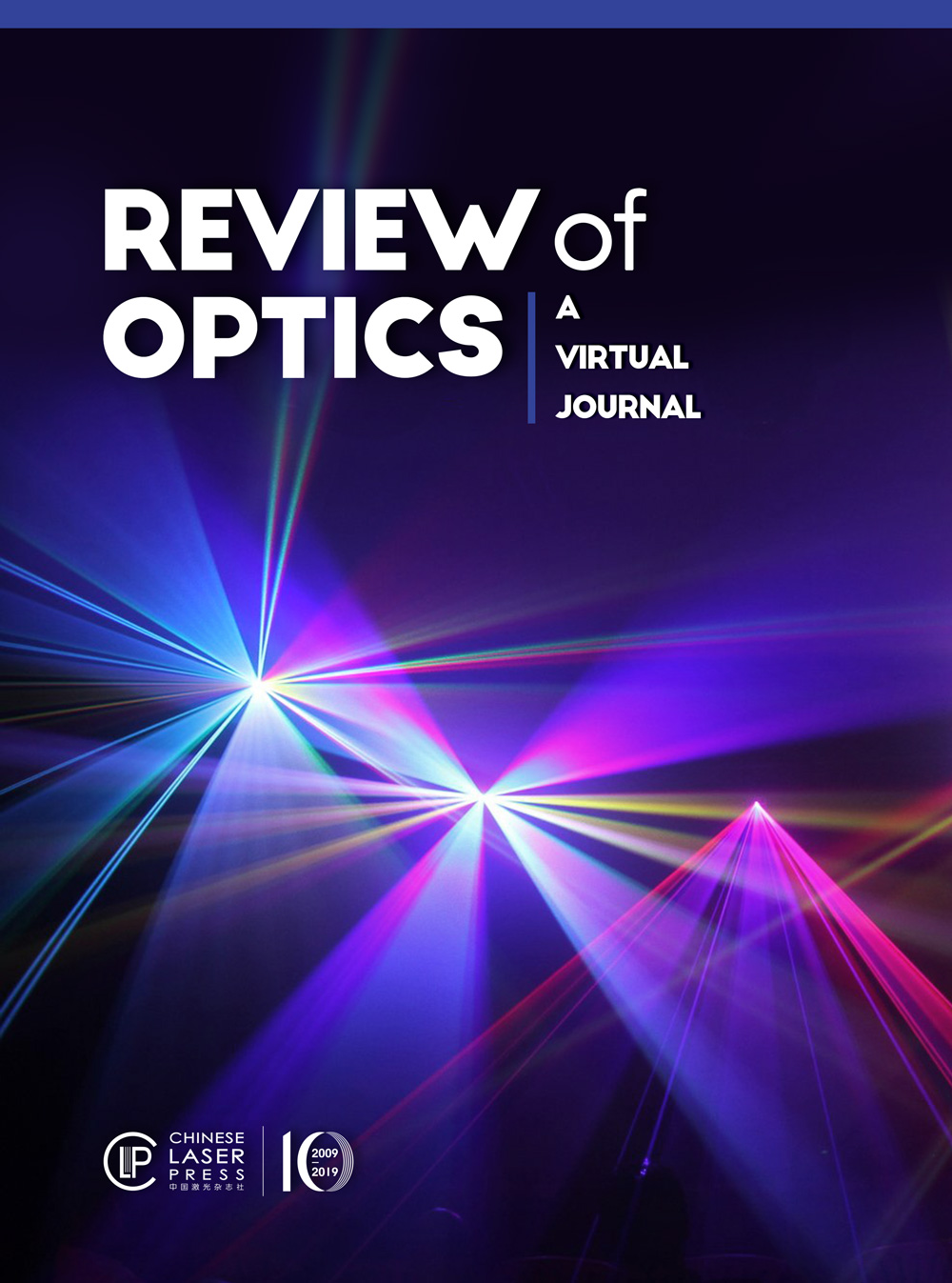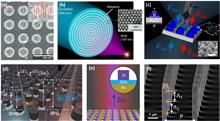 View fulltext
View fulltext
Nonlinear optics is a well-established field of research that traditionally relies on the interaction of light with macroscopic nonlinear media over distances significantly greater than the wavelength of light. However, the recently emerged field of optical metasurfaces provides a novel platform for studying nonlinear phenomena in planar geometries. Nonlinear optical metasurfaces introduce new functionalities to the field of nonlinear optics extending them beyond perturbative regimes of harmonic generation and parametric frequency conversion, being driven by mode-matching, resonances, and relaxed phase-matching conditions. Here we review the very recent advances in the rapidly developing field of nonlinear metasurface photonics, emphasizing multi-frequency and cascading effects, asymmetric and chiral frequency conversion, nonperturbative nonlinear regimes, and nonlinear quantum photonics, empowered by the physics of Mie resonances and optical bound states in the continuum.
Metasurfaces are subwavelength structured thin films consisting of arrays of units that allow the control of polarization, phase, and amplitude of light over a subwavelength thickness. Recent developments in topological photonics have greatly broadened the horizon in designing metasurfaces for novel functional applications. In this review, we summarize recent progress in the research field of topological metasurfaces, first from the perspectives of passive and active in the classical regime, and then in the quantum regime. More specifically, we begin by examining the passive topological phenomena in two-dimensional photonic systems, including both time-reversal broken systems and time-reversal preserved systems. Subsequently, we discuss the cutting-edge studies of active topological metasurfaces, including nonlinear topological metasurfaces and reconfigurable topological metasurfaces. After overviewing topological metasurfaces in the classical regime, we show how they could provide a new platform for quantum information and quantum many-body physics. Finally, we conclude and describe some challenges and future directions of this fast-evolving field.
The refractive-lens technique has been well developed over a long period of evolution, offering powerful imaging functionalities, such as microscopes, telescopes, and spectroscopes. Nevertheless, the ever-growing requirements continue to urge further enhanced imaging capabilities and upgraded devices that are more compact for convenience. Metamaterial as a fascinating concept has inspired unprecedented new explorations in physics, material science, and optics, not only in fundamental researches but also novel applications. Along with the imaging topic, this paper reviews the progress of the flat lens as an important branch of metamaterials, covering the early superlens with super-diffraction capability and current hot topics of metalenses including a paralleled strategy of multilevel diffractive lenses. Numerous efforts and approaches have been dedicated to areas ranging from the new fascinating physics to feasible applications. This review provides a clear picture of the flat-lens evolution from the perspective of metamaterial design, elucidating the relation and comparison between a superlens and metalens, and addressing derivative designs. Finally, application scenarios that favor the ultrathin lens technique are emphasized with respect to possible revolutionary imaging devices, followed by conclusive remarks and prospects.
Surface plasmons (SPs) are electromagnetic surface waves that propagate at the interface between a conductor and a dielectric. Due to their unique ability to concentrate light on two-dimensional platforms and produce very high local-field intensity, SPs have rapidly fueled a variety of fundamental advances and practical applications. In parallel, the development of metamaterials and metasurfaces has rapidly revolutionized the design concepts of traditional optical devices, fostering the exciting field of meta-optics. This review focuses on recent progress of meta-optics inspired SP devices, which are implemented by the careful design of subwavelength structures and the arrangement of their spatial distributions. Devices of general interest, including coupling devices, on-chip tailoring devices, and decoupling devices, as well as nascent SP applications empowered by sophisticated usage of meta-optics, are introduced and discussed.
Low symmetry 2D materials with intrinsic in-plane anisotropic optical properties and high tunability provide a promising platform to explore and manipulate light–matter interactions. To date, dozens of in-plane anisotropic 2D materials with diverse band structures have been discovered. They exhibit rich optical properties, indicating great potential for novel applications in optics, photonics, and optoelectronics. In this paper, we thoroughly review the anisotropic optical properties and polaritons in many kinds of low symmetry 2D materials, aiming to elicit more research interest in this field. First, the optical properties of anisotropic 2D semiconductors, including interband absorption, photoluminescence, excitons, and band structure engineering for tuning optical responses, are introduced. Then fundamentals and advances in experiments of hyperbolic polaritons in anisotropic 2D materials, including phonon, plasmon, and exciton polaritons, are discussed. Finally, a perspective on promising research directions is given.
Integrated-resonant units (IRUs), associating various meta-atoms, resonant modes, and functionalities into one supercell, have been promising candidates for tailoring composite and multifunctional electromagnetic responses with additional degrees of freedom. Integrated-resonant metadevices can overcome many bottlenecks in conventional optical devices, such as broadband achromatism, efficiency enhancement, response selectivity, and continuous tunability, offering great potential for performant and versatile application scenarios. We focus on the recent progress of integrated-resonant metadevices. Starting from the design principle of IRUs, a variety of IRU-based characteristics and subsequent practical applications, including achromatic imaging, light-field sensing, polarization detection, orbital angular momentum generation, metaholography, nanoprinting, color routing, and nonlinear generation, are introduced. Existing challenges in this field and opinions on future research directions are also provided.
Measuring magnetic response from spin and current is of fundamental interest in condensed matter physics. Negatively charged nitrogen-vacancy (NV-) centers in diamond are emerging as a robust and versatile quantum sensor owing to their high sensitivity, nanometer-scale spatial resolution, and noninvasive operation with access to static and dynamic magnetic and electron transport properties. In this review, we discuss the rapidly growing interest in the implementation of NV- magnetometry to explore condensed matter physics, focusing on three topics: anti/ferromagnetic materials, superconductors, and metals/semimetals/semiconductors.














